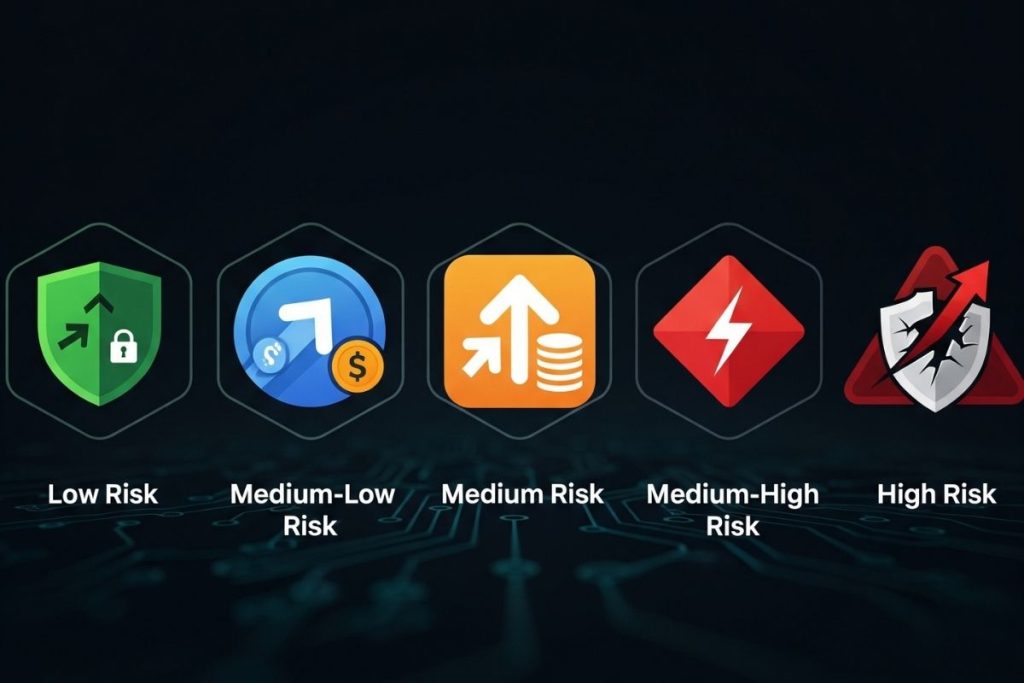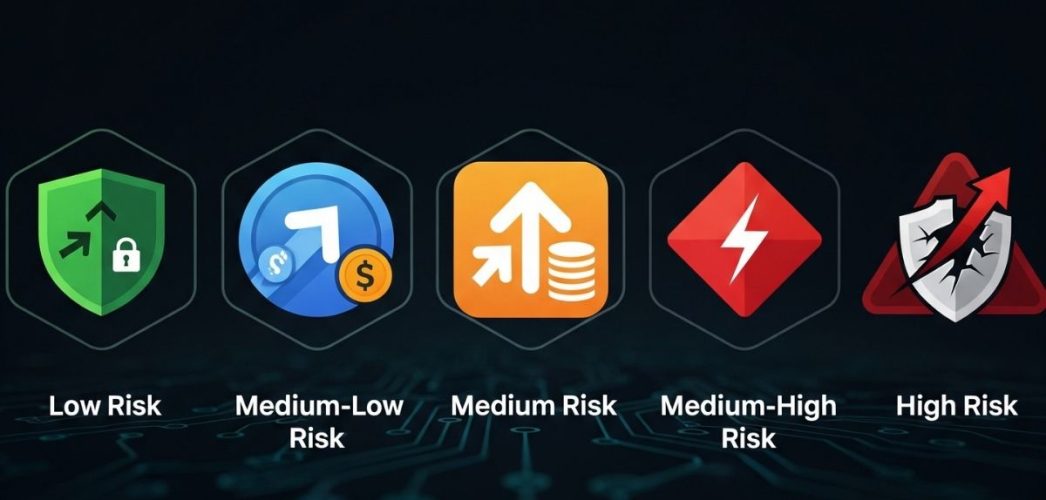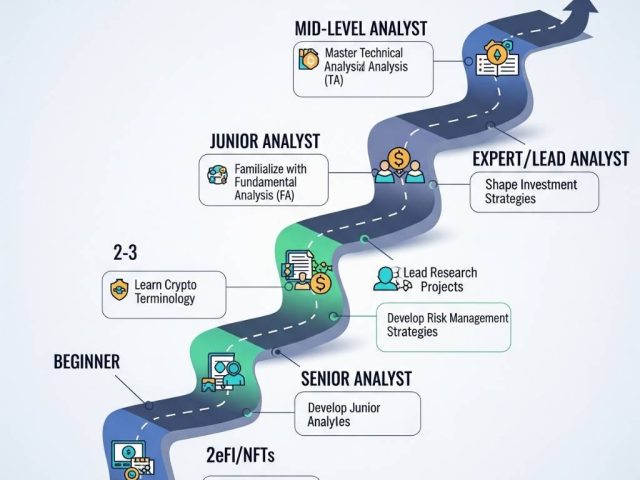A Comprehensive Guide to Maximizing Your Returns
You’ve seen the headlines. While day traders ride the terrifying waves of market volatility, a quieter, more methodical group of crypto investors is generating a steady stream of passive income. Their secret? It’s not a secret at all—it’s staking. But simply locking up your coins isn’t enough. The difference between earning pocket change and building substantial wealth lies in your approach. Without a plan, you’re just guessing.
The real challenge isn’t deciding if you should stake, but how. Which coins offer the best risk-adjusted returns? Should you use a centralized exchange or a DeFi protocol? How do you avoid the pitfalls of slashing or impermanent loss?
This is where having effective crypto staking strategies becomes your most valuable asset. This guide will move you from being a passive participant to an active strategist. We will break down five proven strategies, from conservative to aggressive, empowering you to choose the right path for your financial goals.

What is Crypto Staking and Why Do You Need a Strategy?
At its core, crypto staking is the process of participating in transaction validation on a Proof-of-Stake (PoS) blockchain. When you “stake” your cryptocurrency, you lock it up to help secure the network. In return for your contribution, the network rewards you with more cryptocurrency.
Think of it like earning interest in a high-yield savings account. Your capital (your staked coins) is put to work, and you earn rewards for it.
But unlike a traditional bank account, the crypto landscape is vast and varied. Staking rewards can range from a modest 3% to an eye-watering 100%+ Annual Percentage Yield (APY). This massive variance is precisely why a “set it and forget it” mentality can be costly.
A solid staking strategy helps you:
- Maximize Your Yield: Actively choosing assets and platforms that offer the best returns.
- Manage Risk: Understanding and mitigating potential downsides like network penalties (slashing) or asset volatility.
- Align with Your Goals: Whether you’re seeking stable, long-term growth or are willing to take on more risk for higher rewards.
Without a strategy, you’re essentially navigating a complex financial market blindfolded.
Before You Start: Key Factors to Consider for Staking
Before diving into specific strategies, you need to understand the fundamental building blocks. A successful investor is an informed one.
Understanding Proof-of-Stake (PoS)
Proof-of-Stake is a consensus mechanism that blockchains use to agree on the state of the network and validate new transactions. It’s an energy-efficient alternative to Bitcoin’s Proof-of-Work (PoW) model. In a PoS system, validators are chosen to create new blocks based on the number of coins they hold and are willing to “stake” as collateral.
Choosing the Right Cryptocurrency to Stake
Not all cryptocurrencies are created equal, especially when it comes to staking. Here’s what to look for:
- Network Health and Adoption: A strong, growing network with a dedicated community is more likely to be secure and sustainable long-term.
- Reward Rate (APY/APR): The annual return you can expect. Be wary of extremely high APYs, as they often come with higher risks.
- Inflation Rate: If a coin’s inflation rate (how many new coins are created) is higher than the staking APY, the real return on your investment could be negative.
- Lock-up Periods: Some networks require you to lock your coins for a specific period, during which you cannot sell them.
A deep dive into how to analyze a cryptocurrency’s fundamentals
Assessing Risk vs. Reward
Staking isn’t risk-free. The potential for high rewards is balanced by potential pitfalls.
- Market Risk: The value of your staked asset could decrease, potentially erasing your staking gains.
- Slashing: If the validator node you delegate to misbehaves (e.g., has downtime or validates a fraudulent transaction), a portion of your staked crypto can be “slashed” or destroyed as a penalty.
- Technical Risk: Bugs in a smart contract or platform vulnerabilities can lead to a loss of funds.
Top 5 Crypto Staking Strategies for Maximizing Yield
Now for the core of our guide. These five crypto staking strategies cater to different risk appetites and goals. Most successful investors use a combination of these.

Strategy 1: The ‘Blue-Chip’ Stalwart
This is the most conservative and straightforward strategy. It involves staking well-established, large-market-cap PoS cryptocurrencies like Ethereum (ETH), Cardano (ADA), or Solana (SOL).
- Who it’s for: Investors who prioritize security and long-term, stable returns over sky-high APYs.
- Pros:
- Lower Volatility: These assets are typically less volatile than smaller-cap coins.
- High Security: Their networks are heavily decentralized and battle-tested.
- Abundant Information: Plentiful resources and guides are available.
- Cons:
- Lower APYs: Returns usually range from 3% to 8%, which is lower than riskier options.
- How to do it: You can stake directly on the network, through a trusted staking-as-a-service provider, or on a major centralized exchange.
Strategy 2: The High-Yield Explorer
This strategy involves staking tokens from newer, promising, but less-established projects. These smaller-cap coins often offer higher APYs to incentivize early adoption and network security.
- Who it’s for: Investors with a higher risk tolerance who have done their homework and believe in the long-term potential of a specific project.
- Pros:
- High Potential APYs: It’s not uncommon to see APYs in the 15-50%+ range.
- Potential for Token Appreciation: If the project succeeds, the value of your staked asset (and your rewards) could multiply.
- Cons:
- High Risk: These projects are more prone to failure, and the token’s value is highly volatile.
- Requires Deep Research: You must thoroughly investigate the project’s team, technology, and tokenomics.
Strategy 3: The Liquid Staking Maven
Liquid staking is a game-changer. Protocols like Lido or Rocket Pool allow you to stake your assets (like ETH) and receive a derivative token (like stETH) in return. This derivative token represents your staked position and continues to accrue rewards, but it remains “liquid”—you can trade it or use it in other DeFi applications.
- Who it’s for: Investors who want to earn staking rewards without sacrificing liquidity. It allows you to “double-dip” by earning staking yield and using your capital elsewhere.
- Pros:
- No Lock-up: Your capital remains accessible.
- Capital Efficiency: Use your liquid staking derivative (LSD) to lend, borrow, or provide liquidity for additional yield.
- Cons:
- Smart Contract Risk: You are trusting the liquid staking protocol’s code.
- De-pegging Risk: The derivative token could trade at a discount to the underlying asset.
Strategy 4: The DeFi Yield Farmer
This is one of the most complex and high-risk/high-reward crypto staking strategies. It involves staking Liquidity Provider (LP) tokens. You first provide liquidity to a trading pair (e.g., ETH/USDC) on a decentralized exchange (DEX), for which you receive LP tokens. You then stake these LP tokens to earn additional rewards.
- Who it’s for: Advanced users who are comfortable with DeFi protocols and understand the risks of impermanent loss.
- Pros:
- Extremely High Potential Yields: By combining trading fees and staking rewards, APYs can be very attractive.
- Cons:
- Impermanent Loss: If the prices of the two assets in the pool diverge significantly, the value of your deposited funds can be less than if you had simply held them.
- Complexity: Requires active management and a deep understanding of DeFi.
Learn more about impermanent loss from a trusted source like Binance Academy
Strategy 5: The Diversified Staker
Just as with traditional investing, diversification is key. This strategy involves building a portfolio of staked assets across the risk spectrum. You might allocate a large portion to blue-chip staking, a smaller portion to high-yield explorers, and another slice to liquid staking.
- Who it’s for: Every serious crypto investor.
- Pros:
- Balanced Risk and Reward: Smooths out returns and protects your portfolio from the failure of a single project.
- Broad Exposure: Gains you access to growth across different sectors of the crypto ecosystem.
- Cons:
- Requires More Management: You need to track multiple positions across different platforms.
How Scentia Research Group Simplifies Your Staking Strategy
Navigating these strategies, researching projects, and constantly assessing risk is a full-time job. The crypto market moves at lightning speed, and making an uninformed decision can be incredibly costly. This is the exact problem Scentia Research Group was built to solve.
We understand that you don’t have time to read every whitepaper or monitor every Discord channel. Our team of expert analysts does the heavy lifting for you.
Instead of guessing which high-yield project is legitimate, you can rely on our in-depth project analysis and risk assessment reports. Instead of wondering if a liquid staking protocol is secure, you can consult our smart contract audits and security briefs.
Scentia Research Group empowers you to execute your chosen crypto staking strategies with a level of confidence and clarity that is typically reserved for institutional investors. We provide the data-driven intelligence; you make the informed decisions.
Conclusion: Staking Your Claim in the Future of Finance
Crypto staking offers a powerful pathway to generating passive income and growing your digital asset portfolio. But success requires more than just picking the coin with the highest APY. It requires a thoughtful plan.
By understanding the different crypto staking strategies—from the stability of blue-chips to the high-potential world of DeFi—you can build a resilient, diversified portfolio that works for you. Remember to assess your own risk tolerance, do your due diligence, and never stop learning.
The future of finance is being built today. With the right strategy, you can do more than just watch—you can be a part of it.
Ready to elevate your crypto investment strategy from guesswork to a data-driven science?
Explore the institutional-grade research and analysis from Scentia Research Group. Get the insights you need to stake smarter, manage risk effectively, and build your crypto portfolio with confidence.





